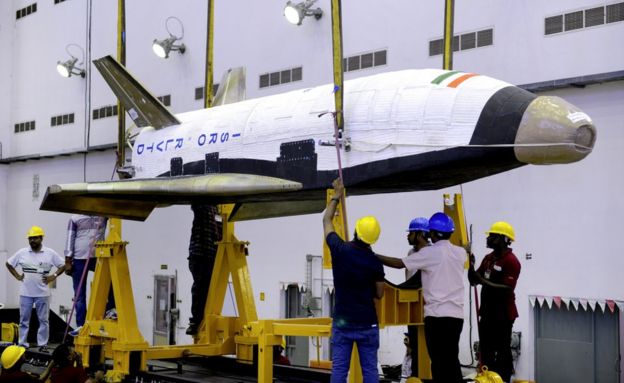
India has launched an unmanned model space shuttle, joining the race to develop reusable spacecraft.
The 7m-scale model took off from Andhra Pradesh and was expected to fly about 70km (43 miles) into the atmosphere before coming down at sea.
Since Nasa stopped its Space Shuttle programme in 2011, there has been strong international competition to design alternative reusable spacecraft.
Such vehicles could significantly cut the cost of space exploration.
India has been putting substantial research and resources into its space programme.
A Mars orbiter launched in 2013 is its most high-profile space venture to date.
It hopes to launch a full-scale reusable shuttle within a decade.
Hypersonic speed
Monday’s launch of the Reusable Launch Vehicle (RLV-TD) took place at a site at Sriharikota.
 Image copyright@NARENDRAMODI
Image copyright@NARENDRAMODIThe 1.75-tonne craft was not expected to survive the flight but was designed to enable the Indian Space Research Organisation (Isro) to collect important data on hypersonic speed and autonomous landing.
The model was developed over the past five years at a cost of 1bn rupees ($14m; £9.6m).
Prime Minister Narendra Modi praised the “industrious efforts” of the scientists involved.
Since the US retired its space shuttle programme, private companies, like billionaire Elon Musk’s SpaceX and Amazon owner Jeff Bezos’s Blue Origin, have been working towards filling the gap – although their interest is in making traditional rockets re-usable as opposed developing winged vehicles that can make horizontal landings.
Japan, Europe and Russia are also in the testing stages for similar shuttle technology.

source BBC